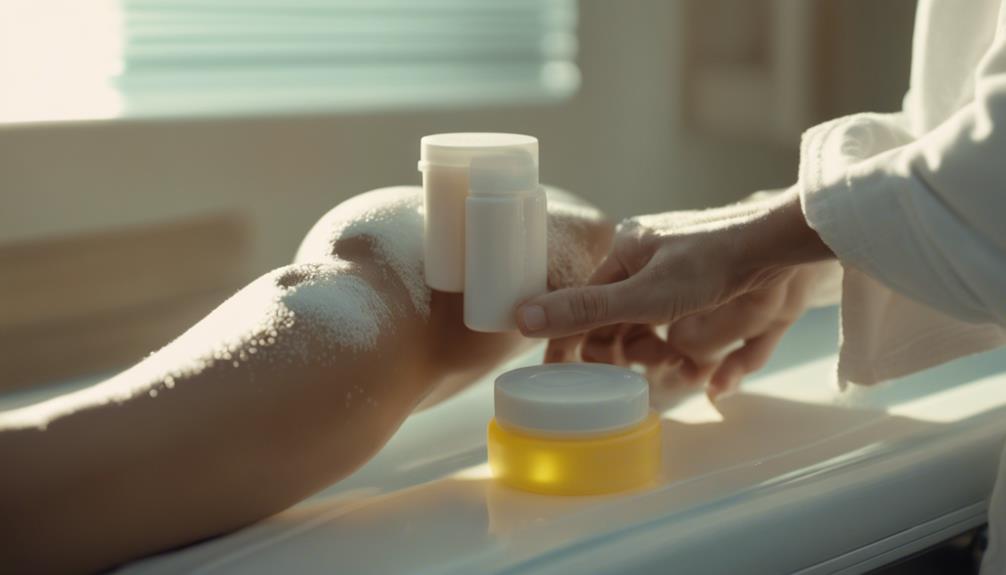To protect yourself from tanning bed infections, it is important to focus on cleanliness and hygiene at the salon you visit. Always check the tanning bed for visible cleanliness and inquire about their sanitization procedures. Use disposable sheets and bring your own towels for added protection. Before tanning, apply antimicrobial skin products with tea tree oil and wear FDA-approved goggles to shield your eyes. After tanning, moisturize your skin with high-quality products to keep it hydrated. Keep an eye on your skin for any changes or irritation post-session. There are many ways to enhance your tanning experience while staying safe. Additionally, consider scheduling shorter tanning sessions to reduce the risk of overexposure to UV rays. Follow safe tanning bed techniques, such as limiting your tanning frequency and avoiding excessive exposure. It is crucial to prioritize the health and safety of your skin while achieving a sun-kissed glow. By maintaining cleanliness, using protective products, and observing your skin, you can have an effective and safe tanning bed experience. Consult a dermatologist for personalized advice on how to use the tanning bed safely based on your skin type and sun exposure history. Stay updated on the latest tanning bed safety tips from reputable sources to ensure a safe tanning experience without compromising your skin’s health. Discuss with other tanning bed users or search online for additional tanning bed safety tips. Being informed and proactive will help you protect your skin and enjoy tanning safely. Remember, prioritizing safety is key to maintaining healthy and radiant skin in the long term. Stay educated and alert about tanning bed safety tips for a positive tanning experience.
Key Takeaways
- Choose tanning salons that prioritize cleanliness and regularly disinfect their equipment to reduce infection risk.
- Always use FDA-approved goggles to protect your eyes from UV damage during tanning sessions.
- Apply antimicrobial skin products, like lotions with tea tree oil, before tanning to prevent infections and skin irritation.
- Use disposable sheets and personal towels in tanning beds to maintain hygiene and minimize contact with germs.
Importance of Cleanliness
Cleanliness is essential when using tanning beds, as unkempt environments can harbor harmful bacteria that could lead to infections.
When you choose a tanning salon, look for one that prioritizes hygiene and regular disinfection.
Before using a tanning bed, inspect it for visible signs of cleanliness.
Don't hesitate to ask salon staff about their sanitizing practices to guarantee that the equipment is well-maintained and properly disinfected.
Remember, UV rays don't eliminate germs, so relying solely on them is risky.
By being proactive and selecting a clean environment, you greatly reduce your risk of potential health issues.
Prioritize your safety and skin health by always confirming that the tanning bed is sanitized before you use it.
Using Protective Gear

To guarantee your safety during tanning sessions, it's crucial to wear protective gear like FDA-approved goggles and use disposable sheets.
Goggles shield your eyes from harmful UV rays, preventing potential damage and long-term vision issues. Additionally, using disposable sheets between your skin and the tanning bed helps maintain hygiene and reduces the risk of infections.
You can also bring personal towels or sheets for added cleanliness. For extra protection, consider employing nasal filters to avoid inhaling airborne bacteria while tanning.
These simple measures not only enhance your tanning experience but also help keep you healthy. Remember, prioritizing protective gear is a smart step toward enjoying your tanning sessions safely and effectively.
Antimicrobial Skin Products

Applying antimicrobial skin products before tanning can help protect your skin from potential infections and irritation.
Look for lotions that contain effective ingredients, like tea tree oil, known for their antibacterial properties. Make sure your skin is clean and dry before applying these products to maximize their effectiveness.
Remember, these antimicrobial lotions should complement your regular skincare routine, not replace it. They provide an additional layer of protection against germs that may linger on tanning beds.
Using high-quality tanning lotion in conjunction with antimicrobial products can also hydrate your skin and enhance its resilience.
Prioritize your skin's health by incorporating these products into your tanning regimen for a safer, more enjoyable experience.
Effective Post-Tanning Care
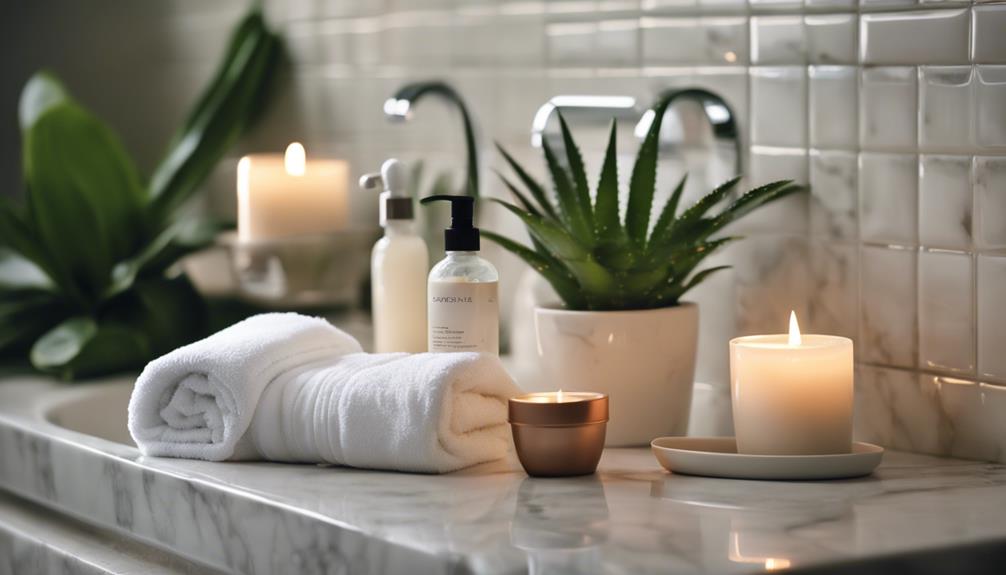
Post-tanning care is essential for maintaining skin hydration and preventing irritation after your tanning session.
Immediately apply a high-quality moisturizer to lock in moisture and soothe your skin. Look for products that contain aloe vera, as they can help calm any irritation. If you experience excessive redness or inflammation, consider using hydrocortisone cream for relief.
After showering, seal in hydration by reapplying your moisturizer to damp skin. It's vital to apply sunscreen daily to protect your skin from UV rays, even after tanning.
Regularly moisturizing will keep your skin healthy and radiant. By following these steps, you can enhance your post-tanning routine and minimize any potential irritation or dryness.
Safe Tanning Practices
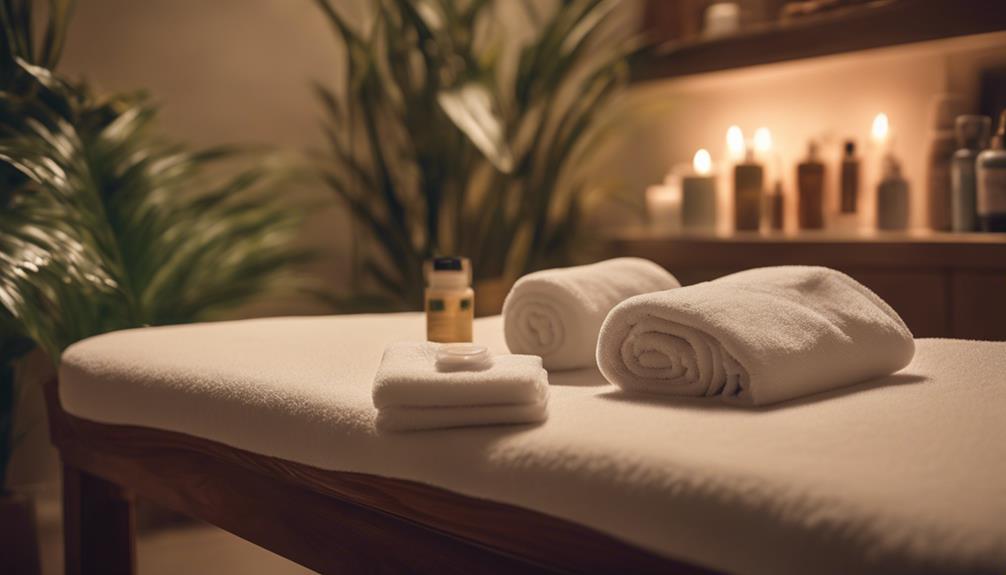
Regularly practicing safe tanning habits is essential for minimizing the risks associated with UV exposure and guaranteeing a healthy tanning experience.
Limit your tanning sessions to reduce overall UV exposure and avoid skin irritation. Always wear FDA-approved goggles to protect your eyes, and consider using disposable sheets between your skin and the tanning bed for added hygiene.
Before you tan, apply antimicrobial lotion to safeguard your skin. Wipe down the tanning bed before each use to guarantee cleanliness, and opt for shorter sessions.
If you notice any irritation, take breaks from tanning and focus on skin health over achieving a darker tan.
Recognizing Skin Changes
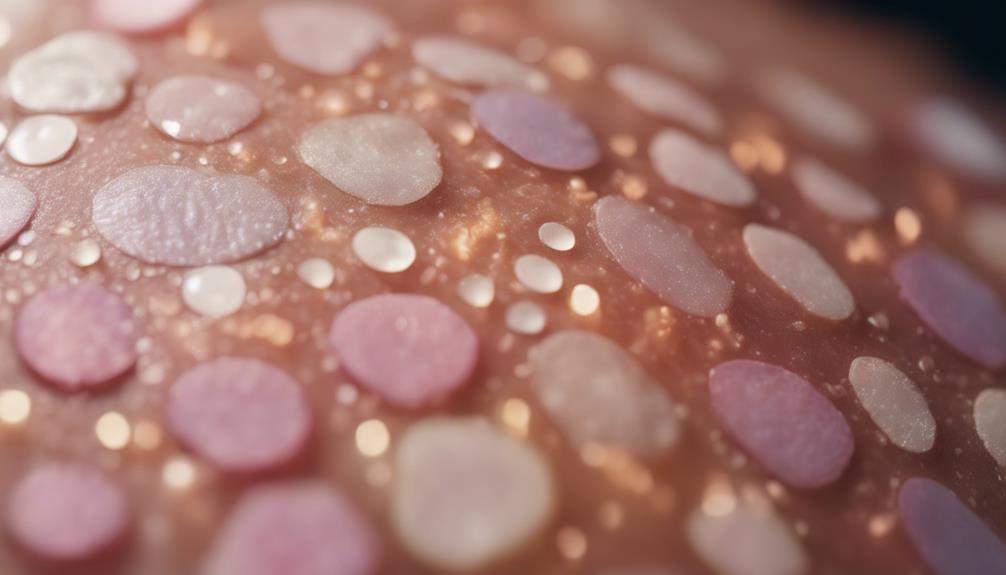
Being aware of any changes in your skin after tanning is essential for maintaining your skin's health and catching potential issues early.
After each session, closely examine your skin for any redness, irritation, or unusual bumps. These signs could indicate an allergic reaction or infection.
Pay attention to persistent dryness or flaking, as they might signal that your skin isn't responding well to UV exposure.
If you notice any unusual dark spots or moles changing in size or color, don't hesitate to consult a dermatologist.
Remember, prioritizing your skin's well-being over achieving a tan can prevent serious complications.
Regularly monitoring your skin helps you stay proactive and guarantees you enjoy tanning safely and healthily.
Additional Hygiene Resources
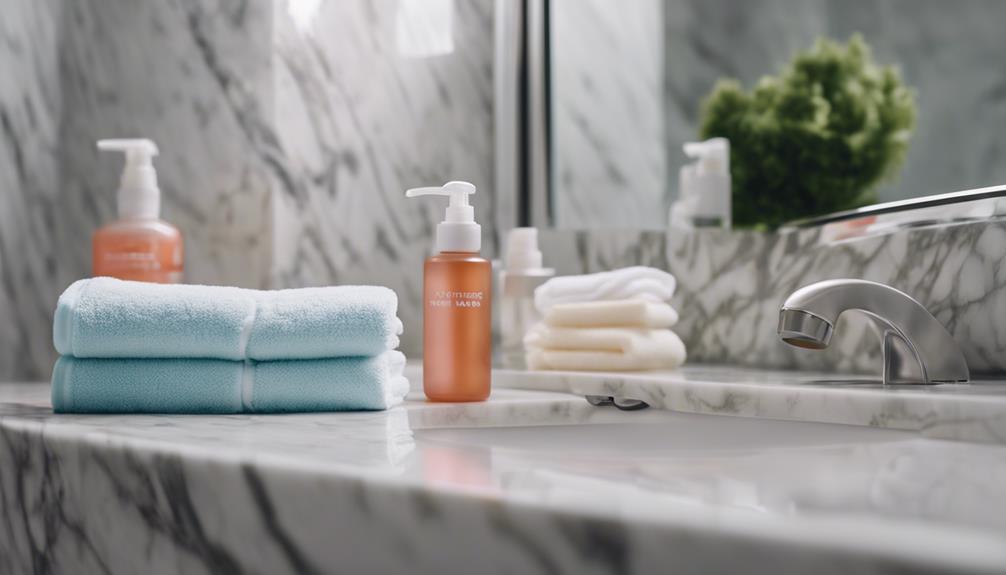
Explore various hygiene resources to enhance your tanning experience and guarantee a safe environment.
Start by reading 'Best Tips for Cleaning Salon Tanning Beds' to understand how salons should maintain cleanliness.
Check out 'Top Hygiene Hacks for a Flawless Tanning Session' for practical strategies that assure your safety.
Don't miss 'Get Bronzed Not Bugged,' which emphasizes the importance of cleanliness to prevent infections.
For facial protection, '10 Best Tanning Bed Face Covers' provides great options to shield your skin from UV damage.
Finally, '3 Key Steps for Pre-Tanning Bed Skin Prep' helps you prepare your skin effectively before tanning, assuring you protect yourself fully.
Utilizing these resources can greatly elevate your tanning experience while minimizing health risks.
Frequently Asked Questions
How Often Should Tanning Beds Be Disinfected?
Tanning beds should be disinfected after every use. You should always check for cleanliness before tanning. If a salon doesn't maintain strict hygiene standards, consider finding a more reputable location that prioritizes your health.
Can I Use My Own Tanning Lotion in Salons?
Yes, you can use your own tanning lotion in salons, but check with the staff first. They might have specific guidelines or preferences regarding products to guarantee safety and effectiveness during your tanning session.
Are There Specific Brands of Protective Eyewear Recommended?
When choosing protective eyewear, look for FDA-approved brands like Eye Candy or Tanning Goggles. These options guarantee your eyes stay safe from harmful UV rays while you enjoy your tanning session. Always prioritize eye protection!
What Are the Signs of a Tanning Bed Infection?
You'll notice signs of a tanning bed infection, like redness, swelling, or unusual itching on your skin. Blisters or pus-filled bumps can appear, indicating infection. Always monitor your skin after tanning sessions for any changes.
Is It Safe to Tan With Existing Skin Conditions?
If you have existing skin conditions, it's best to consult a dermatologist before tanning. They can assess your skin and advise on whether tanning might exacerbate your condition or be safe for you.
How Can I Protect Myself from Tanning Bed Infections in an Eco-Friendly Way?
When using tanning beds, it’s important to prioritize tips for tanning bed sanitation. To protect yourself from infections in an eco-friendly way, bring your own sanitized towels and goggles. Also, choose tanning salons that use natural cleaning products and regularly clean their equipment to reduce the use of harsh chemicals.
Conclusion
So, as you slip into that tanning bed, remember: you're not auditioning for a horror movie about a germ-infested dungeon.
Prioritize cleanliness, don your protective gear, and slather on those antimicrobial products like you're frosting a cake!
Treat your skin like the precious canvas it is, not a neglected art project.
With a little care, you can achieve that golden glow without becoming a cautionary tale of tanning bed infections.
Happy tanning, and may your skin stay healthy and shiny!
